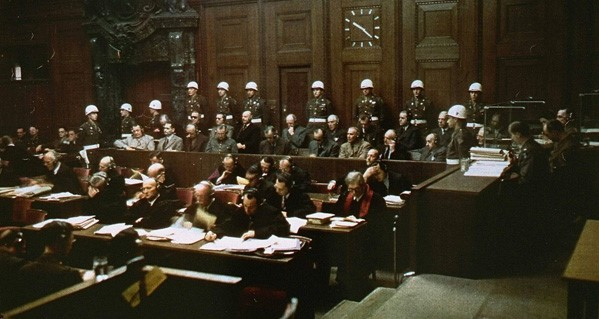You can now go through the files of the Nuremberg Trials
Nuremberg trials: Nazi war criminals in the dock. (Photo: United States Holocaust Memorial Museum, courtesy of National Archives and Records Administration; public domain)
Researchers at Stanford University have digitized the files from the Nuremberg Trials and made them searchable. The online archive comprises a good 50 terabytes.
Almost exactly 75 years ago to the day, the first part of the Nuremberg trials of the main war criminals ended after a marathon that lasted about a year. In the dock were Hermann Göring, Rudolf Hess and Albert Speer, among others. On October 1, 1946, the Allied military tribunal pronounced the verdicts. Twelve of the original 24 accused were sentenced to death in this trial. Interested parties can now view the files from the Nuremberg trials online.
It took over 20 years from the first idea to publish the files on the Internet until the archive is accessible online. Behind the project is Stanford University and in particular David Cohen, who is now a professor and director of the chair for human rights and international justice at the US university, such as tagesschau.de reports. Dieter Simon, then director at the Max Planck Institute for European Legal History in Frankfurt am Main, was also significantly involved in the idea.
Overall, it is the material published online around 5,215 files that contain around 270,000 individual pages and require a good 50 terabytes of storage space. The documents were initially at the International Court of Justice in The Hague. They were digitized by the US Holocaust Memorial Museum in Washington and made searchable (text recognition) by Stanford University. The documents are divided into groups such as charges, closing arguments or individual crimes. Almost two thirds of the documents are in German.
There are also explanatory texts that are intended to make connections visible. In the coming months, Stanford University plans to hold online exhibitions to explain the background to the processes and what they mean. It is also planned to keep the files of the twelve follow-up processes accessible online. To this end, the US researchers are working with the University of Erlangen-Nuremberg. The publication of around 1,000 hours of audio material from the main process is also planned for summer 2022. Six hours of film material should then also be available.



